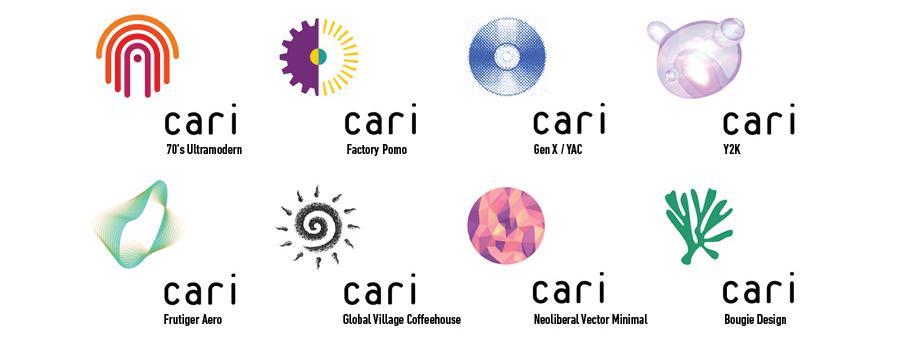

-
0,
- 17 0,
Presented by:
The Consumer Aesthetic Research Institute (CARI) is an online research community dedicated to developing a taxonomy of recent design aesthetics in modern consumer culture, interpreting and critiquing them in the context of societal trends. Our work spans a series of online platforms, taking advantage of their unique formats & structures to engage the public in design discourse, and the development of the aforementioned taxonomy. Through the cultivation of a diverse group of designers, students, researchers, artists, musicians, and writers, we’ve been able to tackle a variety of fields. Currently, we’re in the process of creating a centralized website to collect and present our findings over the past four years in an accessible and engaging manner.
Our work began four years ago as an interest in developing a more cohesive understanding of an era we vaguely remembered from childhood, the turn-of-the-millennium. Through intensive research incorporating a wide range of digital and physical sources, we’ve been able to both repair the era’s infamous archival ‘black hole’, and formulate a detailed understanding of what we’ve termed the ‘Y2K Aesthetic’. An optimistic, techno-utopian style; it epitomizes that brief moment of dotcom fervor when the future was composed of shiny pleather pants, silver eyeshadow, rimless tinted shades, sleek computer-generated graphics, and blobby translucent electronics.
Building on this initial investigation, our work has since branched out to form a small universe of design research, constantly evolving as more contributors become involved. We’ve been able to expand on existing design history & research, filling in archival gaps and connecting more well-documented design movements with those that have previously been underexplored, or deemed too insignificant for study. For example, our research led us to rediscover a design aesthetic that seems to have been forgotten in the collective consciousness, one we’ve termed ‘Global Village Coffeehouse’. It’s that earth-toned, woodcut spiral, kokopelli figure, tribal-themed coffee shop style that never seemed to have a name, but was omnipresent from the late 1980s to the mid 1990s. Then there’s ‘McBling’, the maximalist reaction against Y2K that dominated the pre-‘Great Recession’ era, coating the design landscape with a layer of gold leaf, fleur-de-lis, flowery vector graphics, and oversized baroque-inspired furnishings.
These are just a few examples of the many aesthetic ‘channels’ we’ve been investigating. Our hope is that through further research we can develop a better understanding of the recent past; making design history and discussion more publicly accessible by dissecting the aesthetics of the consumer-driven world we occupy. For the SDF, we’ll be engaging in an interactive activity to apply these categories we’ve been developing to the local context of Seattle, and it’s ever-shifting design landscape.
Ramped access
Integrated and dispersed wheelchair seating
Wheelchair-accessible box office, stage/ backstage, meeting, and dressing rooms
Wheelchair-accessible display cases, exhibit areas, and counters
Wheelchair-accessible restrooms and water fountains
All-gender restrooms







